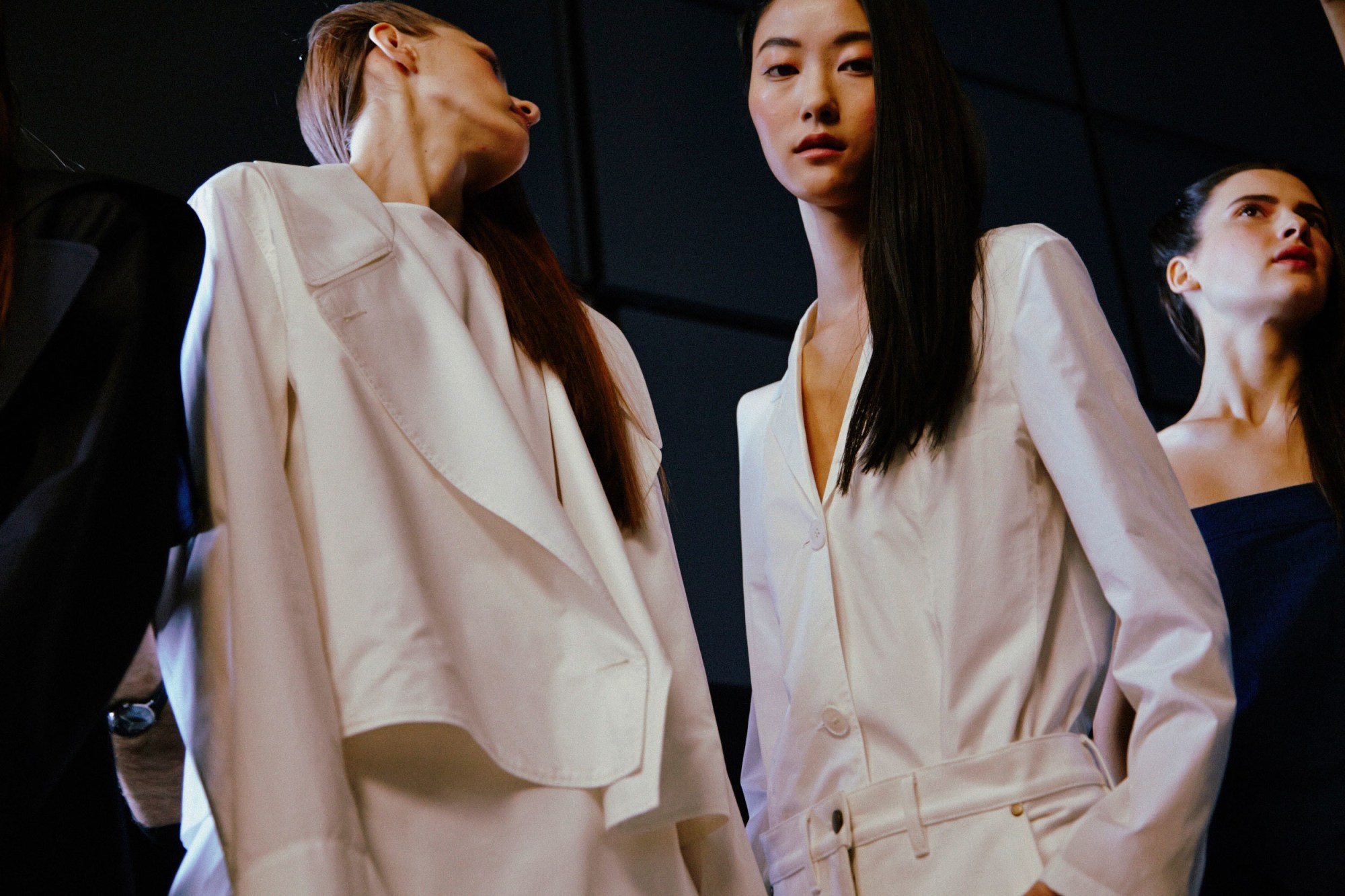During Paris’ menswear fashion week, AMI, a label that rose to fame for modernising the Parisian bobo (bohemian bourgeois), sends down a chic little creature down the runway. The latest boy en vogue? Look closer: draped in an ample pea coat and slicked back hair, this is garconne-in-chief Agathe Mougin, a model and local It-girl known for her Gallic tomboy charms.
The show, peppered with female silhouettes, doesn’t make a sharp cross-dressing statement, but rather, suggests a sense of fluidity in apparel and gender roles. “My clothes have been worn by women too from the start ” said founder and designer Alexandre Mattiussi, “Women are as much part of the brand’s influence and history as men.”
Please witness the rise of the anti-Carine Roitfelds. A new generation of Parisian girls and labels that seem to define themselves in polar opposition to French Vogue’s former halo, le porno chic. Delving into garconne history, classic masculine details are reinjected into womenswear, to establish a femininity that isn’t defined in opposition to masculinity.
This includes chanson singer Christine and The Queens, never on stage without a trim tuxedo; Marie Marot, an accessories designer and street style star, known for her trilby hats and overall Christophe Lemaire-esque chic; Adrienne Rich and Aude Walker (respectively chief editors at French Grazia and Stylist) who brought sneakers – gasp – to fashion’s front rows. Goodbye Louboutin, hello Stan Smith.
And AMI isn’t the only one to adapt: seeing the rise of women customers, indie labels such as Etudes Studio or Laurence Airline have also added female models to their runways. “A size S or XS is perfect for a slightly androgynous woman” said Garance Broca, the creative director of Parisian brand Monsieur Lacenaire. Noticing the high popularity of her designs amongst both genders, she recently launched a capsule that merely readjusts masculine cuts for a slighter frame. “There is a desire for a femininity that isn’t situated in extreme stereotypes. Women are neither after hyper-femininity not cliche masculinisation but seek blurrier codes surrounding sex appeal” believes Broca.
This has much to do with the current state of the economy. It is no wonder Carine Roitfeld’s sexed up femmes came to popularity at a time of financial boom, when the figure of the Golden Boy rose to peak. Both mutually validated exacerbated gender roles. Today, in recession-hit society, the Patrick Batemans of the world have been murdered and replaced by other success stories and male ideals – such as the unlikely, hoodied-up Mark Zuckerberg. He embodied an entire generation characterized by freelance life, grass-root entrepreneurship, mobility and technology – factors that rethought women’s relation not only to the Other, but also to privacy, adulthood, and the external world-at-large.
Today, in France, androgynous clothing also means taking a subtle stance within a riotous political landscape. Last month, the rather terrifying protest ‘La Manif pour Tous’ brought 70,000 angry Frenchmen to march through the capital march asking for repealing gay marriage and the law allowing for medically assisted procreation not to be passed. In the light of Celine Sciamma’s film Tomboy -addressing the formation of feminine identity in childhood – being forbidden in schools, and gender studies still struggling to find a respected space in universities, could garconnes be more than a passing trend?
While their 1920s version fought for equality between the sexes by smoking and wearing blazers, their new incarnation wears flats as a rallying sign for a queer and feminist definition of equality. Who thought trainers could take you this far?
Credits
Text Alice Pfeiffer
Photography Harry Carr, Christophe Lemaire spring/summer 15
